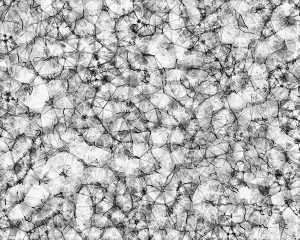
I chose to look at Casey Reas’ computational Process 7, in which various elements are randomly placed and relationships are created between each elements. Personally, I am drawn to things that sprawl, which this piece certainly does. I think its dynamic nature and irregularity oddly enough keep it from reading chaotic. Although random, I can sense an underlying pattern which keeps me looking at the piece.
Something that I failed to find were the intended dimensions and medium. I understand that it was made on the computer, but I am unclear of how this piece was intended to be viewed, on a laptop screen, printed on a poster, or even projected onto an entire wall. Personally I thought it would be impressive the bigger it was, especially how it seems as if there is a strong amount of small detail. But the biggest critique I have is the lack of information on how the piece should be viewed.
Many of Reas’ work seem to work upon similar themes. I feel like this type of work literally and broadly fills in many spaces. Although strict formal and uniform lines are more predictable, I think that Reas is trying to show that this type of work does have its applications through its unexpected visual appeal. Although seemingly uncontrolled, these variable parameters that govern a multitude of interactions creates a dynamic image.
![[OLD – FALL 2016] 15-104 • COMPUTING for CREATIVE PRACTICE](wp-content/uploads/2020/08/stop-banner.png)